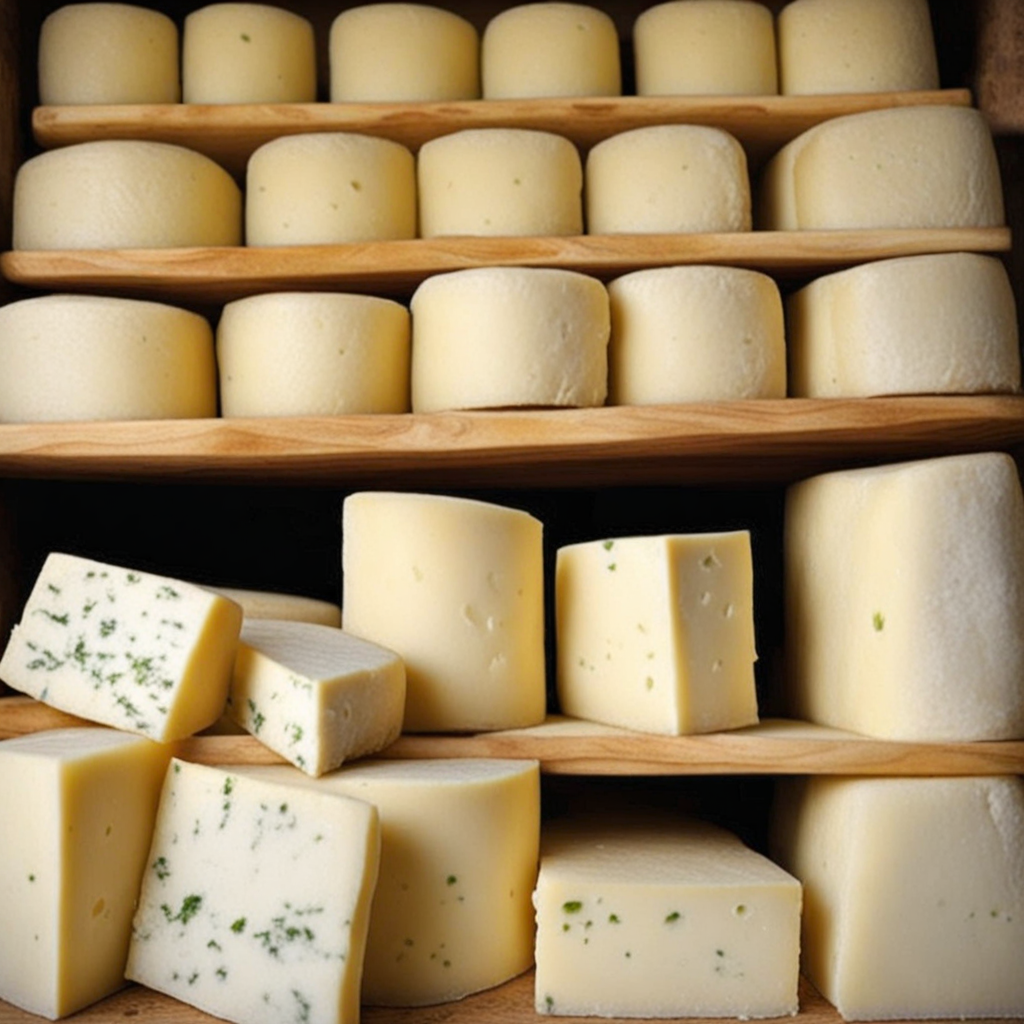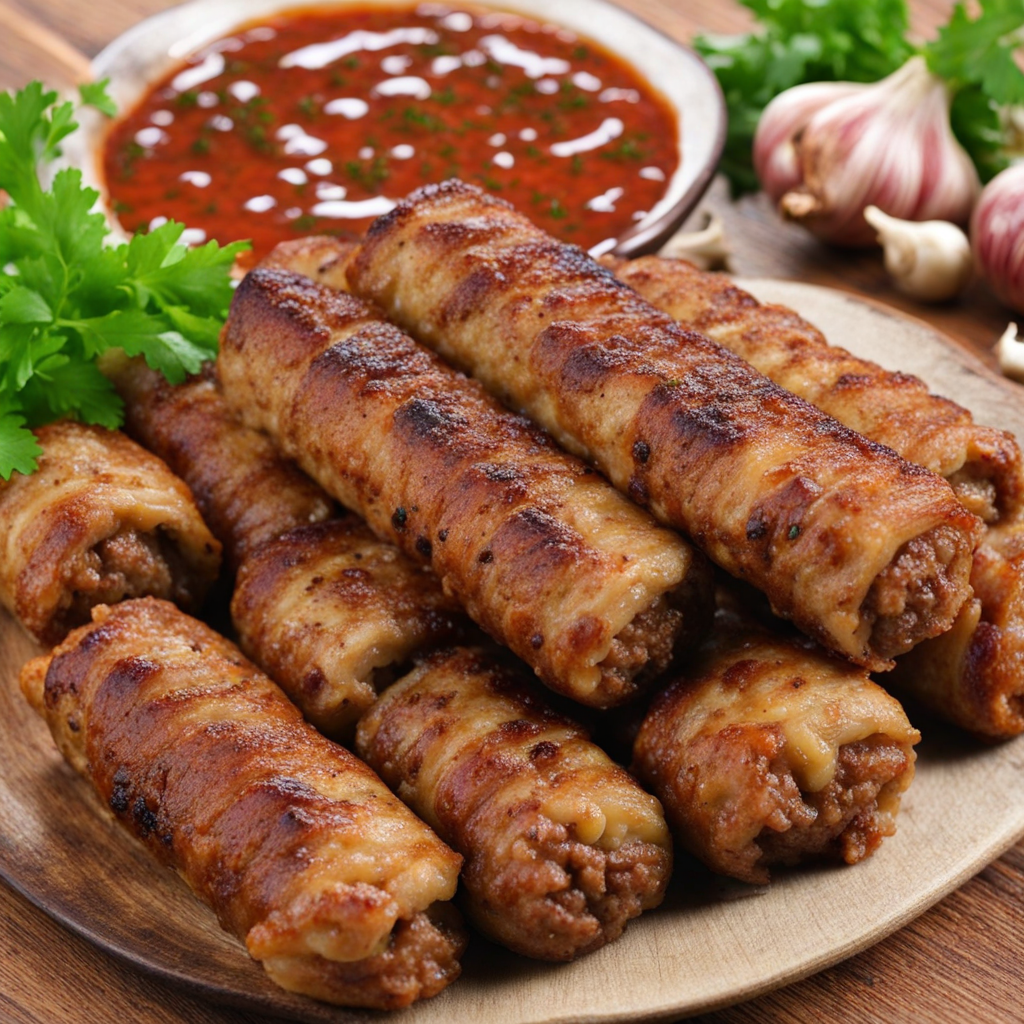Cighiri
Cighiri is a traditional Romanian dish that delights the senses with its unique blend of flavors and textures. This savory preparation features a base of cornmeal, which is carefully cooked to achieve a creamy consistency similar to polenta. The cornmeal is often combined with a variety of ingredients such as cheese, sour cream, or even meat, creating a rich and hearty meal that embodies the rustic charm of Romanian cuisine. The dish is usually topped with a sprinkle of herbs, adding a fresh note that complements the robust flavors perfectly. The preparation of Cighiri varies by region, with some versions including local specialties like smoked meats or seasonal vegetables, enhancing its versatility. The dish is typically served warm, allowing the cheese to melt beautifully, creating a gooey texture that is both comforting and satisfying. When taking a bite, you’ll experience the delightful contrast between the creamy cornmeal base and the richness of the toppings, making it a fulfilling choice for any meal of the day. Cighiri is not just a dish; it's a comforting embrace of Romanian tradition that brings people together around the table. Often enjoyed during festive occasions or family gatherings, it reflects the warmth and hospitality characteristic of Romanian culture. Pairing it with a glass of local wine or a refreshing yogurt drink can elevate the experience, making each bite a celebration of flavors that are both familiar and exciting to explore.
How It Became This Dish
The History of Cighiri: A Culinary Jewel of Romania #### Origins and Etymology Cighiri, a traditional Romanian dish, embodies the rich tapestry of the nation’s culinary heritage. Its name, derived from the Romanian word “cighiri,” refers to a specific type of savory pie that is often filled with various ingredients, including meats, cheeses, and vegetables. The term itself is believed to be rooted in the region's historical interactions with neighboring cultures, particularly the Ottoman Empire, which introduced various culinary techniques and ingredients that shaped Romanian cuisine over the centuries. The precise origins of cighiri are somewhat murky, but many food historians agree that the dish likely evolved from ancient cooking practices that date back to Dacian times. The Dacians, the ancestors of modern Romanians, were known for their agrarian lifestyle, cultivating grains and vegetables, which laid the foundation for many Romanian dishes. As Romania was influenced by waves of migration and conquest—most notably by the Romans, Ottomans, and Austro-Hungarians—the culinary landscape transformed, leading to the development of diverse regional specialties, including cighiri. #### Cultural Significance Cighiri holds a unique place in Romanian culture, symbolizing not only the country’s agricultural bounty but also its communal spirit. Traditionally, cighiri is prepared for festive occasions, family gatherings, and local celebrations, making it a dish that brings people together. The preparation and sharing of cighiri often reflect the values of hospitality and generosity, which are deeply ingrained in Romanian culture. The dish is particularly popular in regions like Transylvania and Moldavia, where it is often served alongside other traditional foods during celebrations such as weddings, holidays, and harvest festivals. Cighiri can be found in both rural and urban settings, showcasing its widespread appeal across different socio-economic classes. In many households, the recipe for cighiri is passed down through generations, often with variations that reflect local tastes and available ingredients. #### Ingredients and Preparation The beauty of cighiri lies in its versatility. The core components typically include a flaky pastry crust and a filling that can vary widely. Common fillings consist of minced meat (particularly pork or beef), potatoes, onions, and various spices. In some regions, the dish is enriched with local cheeses or vegetables, such as spinach or mushrooms. The pastry itself is often made with simple ingredients—flour, water, and oil—resulting in a light, crisp texture that complements the hearty filling. Preparation of cighiri is often a communal activity, with family members coming together to roll out the dough and prepare the filling. This communal aspect highlights a sense of unity and tradition that is integral to Romanian culture. The pies are typically baked until golden brown and served warm, sometimes accompanied by sour cream or a side of pickled vegetables, which provide a refreshing contrast to the rich filling. #### Development Over Time As Romania underwent significant socio-political changes throughout the 19th and 20th centuries, so too did the culinary landscape, including the evolution of cighiri. The unification of the Romanian principalities, the advent of industrialization, and the impacts of World War I and II all contributed to shifts in food production and consumption patterns. During the communist era, food scarcity and rationing led to a more utilitarian approach to cooking. Traditional recipes, including cighiri, were adapted to accommodate limited resources, resulting in variations that emphasized creativity and resourcefulness. Despite these challenges, cighiri remained a beloved dish, serving as a comforting reminder of home and heritage during difficult times. In the post-communist era, Romania experienced a culinary renaissance, with a resurgence of interest in traditional foods and local ingredients. Cighiri has enjoyed renewed popularity, often featured in restaurants that celebrate Romanian cuisine. Chefs have begun to experiment with the dish, incorporating modern techniques and global flavors while respecting the traditional roots of cighiri. #### Modern Interpretations Today, cighiri is not merely a relic of the past; it has adapted to contemporary tastes while retaining its cultural significance. Many chefs and home cooks are exploring innovative fillings, including vegetarian and vegan options, as well as international influences that reflect Romania's growing cosmopolitanism. The rise of food tourism has also contributed to the popularity of cighiri, with visitors eager to experience authentic Romanian cuisine. Cighiri can now be found in various forms throughout Romania, from street food stalls to fine dining establishments. Food festivals frequently showcase cighiri, allowing locals and tourists alike to savor this traditional dish while celebrating Romania's culinary heritage. Furthermore, the dish has made its way into social media, where food bloggers and influencers share their takes on cighiri, contributing to its visibility and appreciation both at home and abroad. #### Conclusion Cighiri is more than just a dish; it is a testament to Romania's rich cultural history and the resilience of its people. From its ancient roots to its modern interpretations, cighiri encapsulates the spirit of Romanian culinary traditions that have been shaped by geography, history, and community. As Romania continues to evolve, so too does cighiri, bridging the past and the present while reminding us of the importance of food in forging connections and celebrating heritage. In essence, cighiri serves as a delicious symbol of Romania’s identity, offering a taste of history, culture, and the warmth of communal ties—elements that endure and thrive in an ever-changing world. Whether enjoyed at a festive gathering or a quiet family meal, cighiri remains a beloved staple that captures the heart and soul of Romanian cuisine.
You may like
Discover local flavors from Romania







